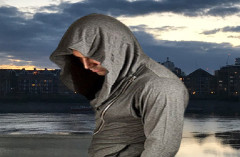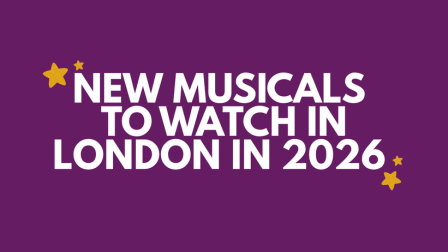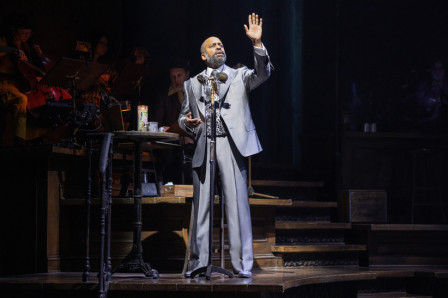Staging Hamlet in the Time of Covid
 Phil Willmott
1 September, 2020, 21:36
Phil Willmott
1 September, 2020, 21:36
 As soon as the Government announced that outdoor performances were to be permitted if organisers adhered to Covid related regulations I sat down, as the Artistic Director of an open air theatre company, to consider what could be safely achieved.
As soon as the Government announced that outdoor performances were to be permitted if organisers adhered to Covid related regulations I sat down, as the Artistic Director of an open air theatre company, to consider what could be safely achieved.
The rules gave me very clear parameters within which to stage a production. Any performance had to be no more than 90 minutes long and I could only work with up to six people.
In addition to these challenges every performance space I usually use was closed.
I also felt bound by my 17 year tradition of making a free, summer production aimed at the majority of people who never usually attend - because they can’t afford it, find conventional venues intimidating, fear they wouldn’t be welcome, think they wouldn’t understand or be bored, or simply because it never occurs to them to go.
I needed a relaxed venue, where an audience could safely socially distance, that wouldn’t intimidate anyone, sounded fun to come to and, because I’d be working in a new location where I hadn’t established a history of performance, I’d need a title most people had heard of to attract them along.
The solution to where to do all this turned out to be just beneath my window – a stretch of sand left by the Thames at low tide. I opted to stage the best known play in the world and the idea of HAMLET ON THE BEACH began to come together.
The problem was it’s a very long play - an actor/director like Kenneth Branagh can stretch it out to nearly four hours!!! and it has 18 speaking roles.
Of course I could have staged a version where my six actors kept swapping hats and voices to portray everybody between them, I’ve done plenty of productions like that, but somehow for me, the best productions of Hamlet are where you feel a real and personal connection with his journey. I would be cheating the plays first time audience if I jeopardised that with a tricksy staging.
So I decided to focus the events of the play around 6 characters and, once I had decided who and why, the long play seemed to pair itself down naturally; preserving the spirit and integrity of the original whilst moving more swiftly between the set piece moments now that it didn’t have to give stage time to so many people.
Consequently, to make the story hang together, all the six remaining roles now had to be assigned additional tasks within the plot which had previously been carried out by the deleted characters.
I put much thought into who might naturally do what, so the piece might seem seamless to anyone encountering the play for the first time. That too yielded some riches. For instance Ophelia is a much more rounded and less passive character now she takes a more pivotal role.
So, entirely out of necessity, HAMLET ON THE BEACH isn’t HAMLET as you might have previously encountered it. It is its own entity. A version of Shakespeare shaped by the situation we’re living in right now. A Hamlet for today.
Our budget was virtually zero, everyone volunteered, they’re in modern dress that’s a combination of their own clothes and items we could borrow. The little set and few props we use came from my store of bits and from past productions, and there’s no electricity so any lighting has to be basic, battery operated and carried by us.
So this is real back to basics theatre, audiences gather in a circle, in the twilight on our beach and actors create a world in their midst using only the power of Shakespeare’s words and story.
Why not pay us a visit. Tickets are free and all the details are on our website including your responsibilities at the time of Covid.
I hope you enjoy it as much as our audiences so far, we’ve really had fun making it for you.
Latest News

 New musicals to watch in London in 2026
28 December 2025 at 11:24
New musicals to watch in London in 2026
28 December 2025 at 11:24

 New plays to watch in London in 2026
28 December 2025 at 09:24
New plays to watch in London in 2026
28 December 2025 at 09:24

 Daniel Breaker joins West End production of Hadestown
26 December 2025 at 21:46
Daniel Breaker joins West End production of Hadestown
26 December 2025 at 21:46

 London Productions 2025 - A Year in Review
26 December 2025 at 21:11
London Productions 2025 - A Year in Review
26 December 2025 at 21:11